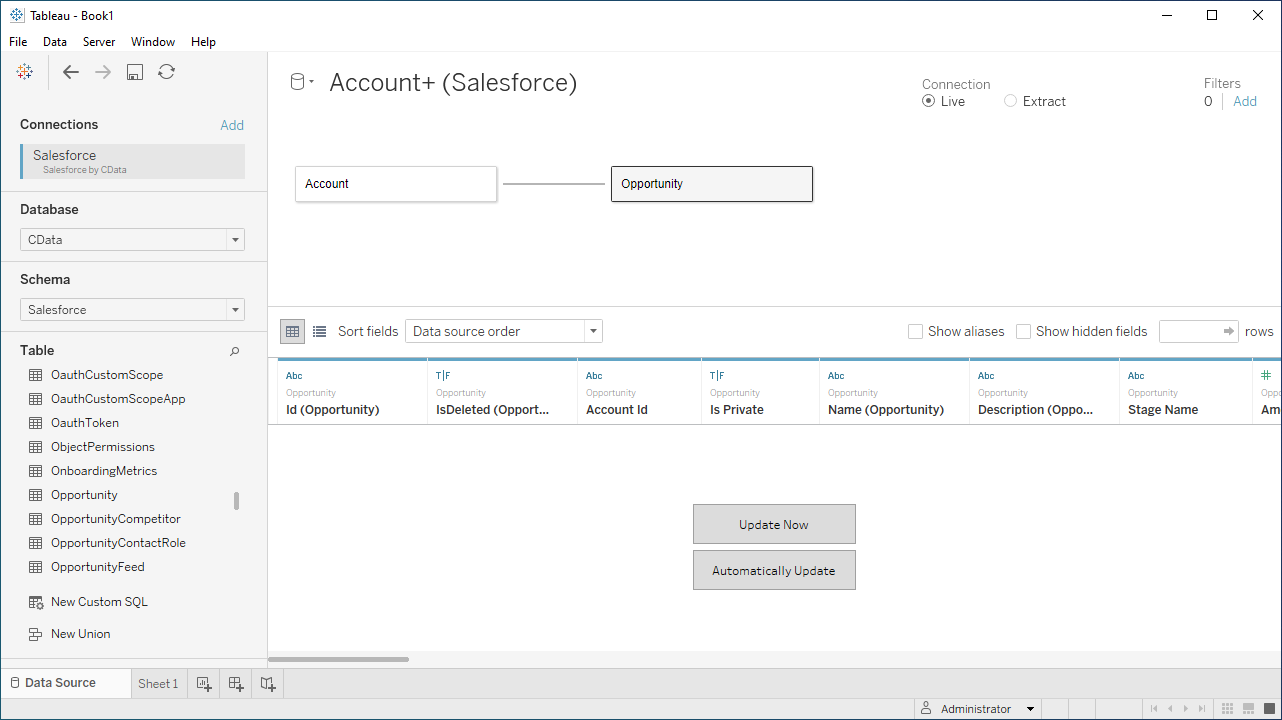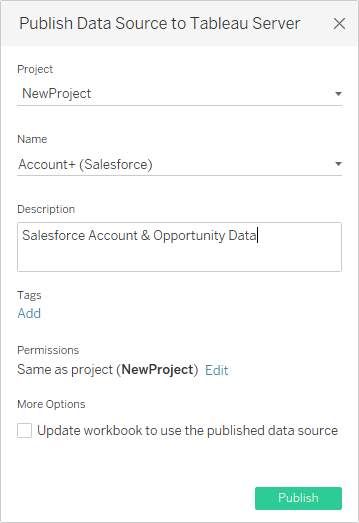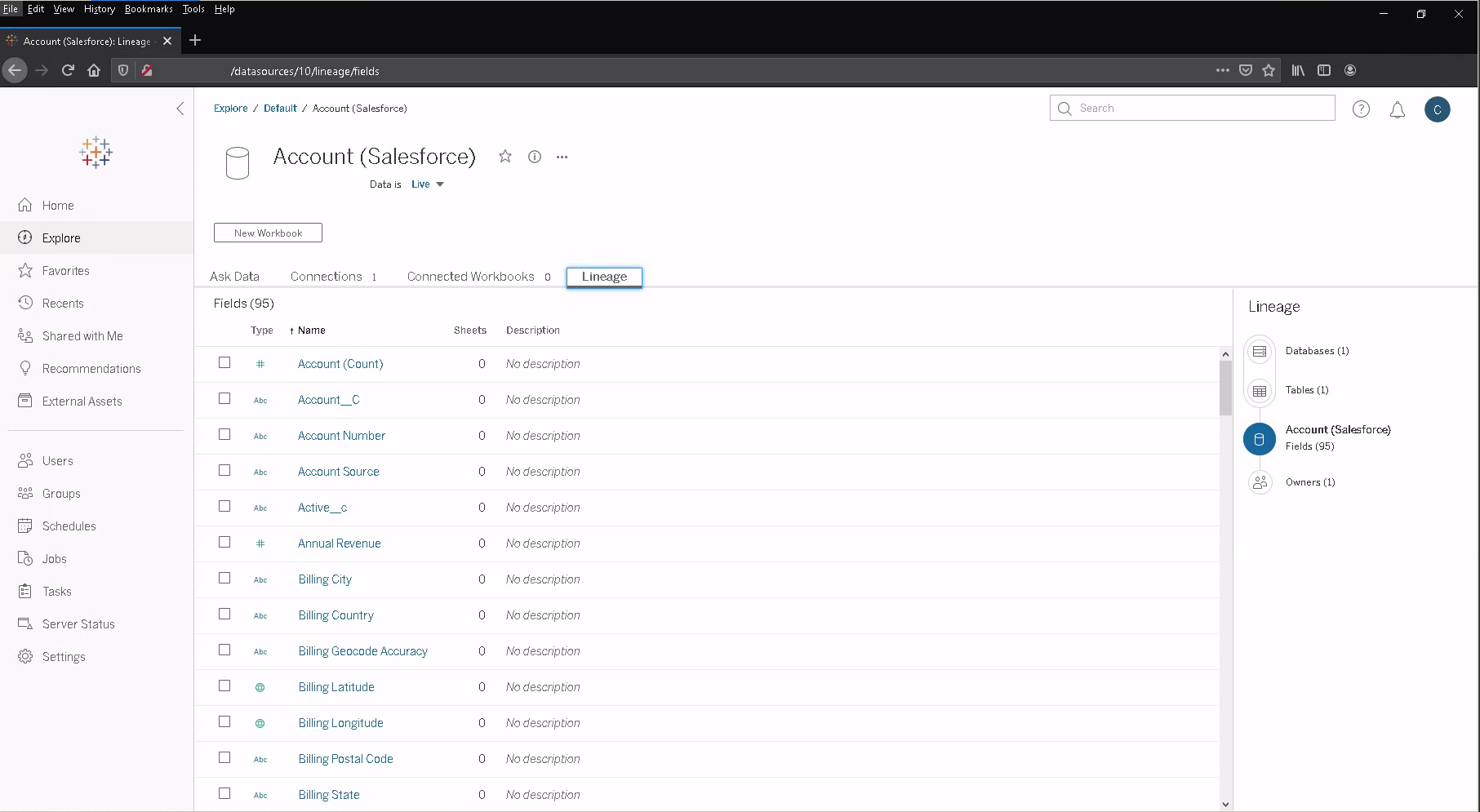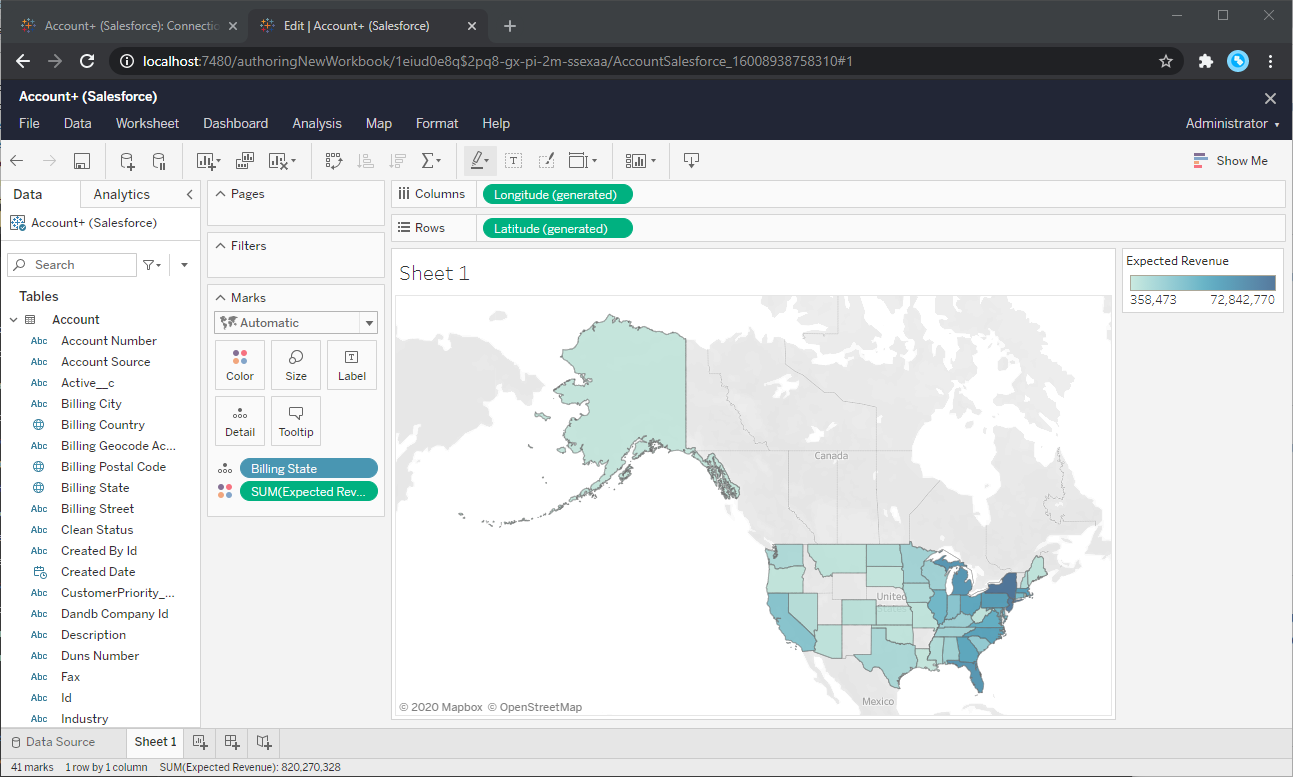Discover how a bimodal integration strategy can address the major data management challenges facing your organization today.
Get the Report →Publish Zuora-Connected Dashboards in Tableau Server
Use CData JDBC drivers and Tableau Server to visualize live Zuora data.
Tableau Server is a visual analytics platform transforming the way businesses use data to solve problems. When paired with the CData JDBC Driver for Zuora, you get access to live Zuora data within Tableau Server. This article shows how to connect to Zuora in Tableau Desktop, publish a Data Source to Tableau Server, and build a simple chart from that data.
The CData JDBC Driver enables high-speed access to live Zuora data in Tableau Server. Once you install the driver, you simply authenticate with Zuora and you can immediately start building responsive, dynamic visualizations and dashboards. By surfacing Zuora data using native Tableau data types and handling complex filters, aggregations, & other operations automatically, CData JDBC Driver grants seamless access to Zuora data.
Enable Connectivity to Zuora in Tableau Server
Start by installing the CData JDBC Driver on the machine hosting Tableau Server.
If your server is a Linux Machine:
- Copy cdata.jdbc.zuora.jar and cdata.tableau.zuora.lic.
- Place the copies in the Tableau Server Connectors folder (/opt/tableau/tableau_driver/jdbc).
- Restart Tableau Server.
If your server is a Windows Machine:
- Copy cdata.jdbc.zuora.jar and cdata.tableau.zuora.lic.
- Place the copy in the Tableau Server drivers directory (C:\ Program Files\Tableau\Drivers).
- Restart Tableau Server.
Next, install the CData JDBC Driver on the machine running Tableau Desktop. Before starting Tableau on Windows, make sure that you have placed the .jar file in the C:\Program Files\Tableau\Drivers folder. Before starting Tableau on macOS, make sure that you have placed the .jar file in the ~/Library/Tableau/Drivers folder.
Connect to Zuora in Tableau Desktop
Once the driver is installed on the Server machine, we can configure a connection to Zuora in Tableau Desktop and publish a Zuora-based Data Source to Tableau Server.
- Open Tableau Desktop.
- Click More under Connect -> To a Server.
- Select "Other Databases (JDBC)".
- Configure the connection to the data. The driver comes with a connection string builder that streamlines creating and managing the content of connection strings. Note that you will need to manually add "jdbc:zuora" to the beginning of the connection string.
- Click "Sign In".
Zuora uses the OAuth standard to authenticate users. See the online Help documentation for a full OAuth authentication guide.
Configuring Tenant property
In order to create a valid connection with the provider you need to choose one of the Tenant values (USProduction by default) which matches your account configuration. The following is a list with the available options:
- USProduction: Requests sent to https://rest.zuora.com.
- USAPISandbox: Requests sent to https://rest.apisandbox.zuora.com"
- USPerformanceTest: Requests sent to https://rest.pt1.zuora.com"
- EUProduction: Requests sent to https://rest.eu.zuora.com"
- EUSandbox: Requests sent to https://rest.sandbox.eu.zuora.com"
Selecting a Zuora Service
Two Zuora services are available: Data Query and AQuA API. By default ZuoraService is set to AQuADataExport.
DataQuery
The Data Query feature enables you to export data from your Zuora tenant by performing asynchronous, read-only SQL queries. We recommend to use this service for quick lightweight SQL queries.
Limitations- The maximum number of input records per table after filters have been applied: 1,000,000
- The maximum number of output records: 100,000
- The maximum number of simultaneous queries submitted for execution per tenant: 5
- The maximum number of queued queries submitted for execution after reaching the limitation of simultaneous queries per tenant: 10
- The maximum processing time for each query in hours: 1
- The maximum size of memory allocated to each query in GB: 2
- The maximum number of indices when using Index Join, in other words, the maximum number of records being returned by the left table based on the unique value used in the WHERE clause when using Index Join: 20,000
AQuADataExport
AQuA API export is designed to export all the records for all the objects ( tables ). AQuA query jobs have the following limitations:
Limitations- If a query in an AQuA job is executed longer than 8 hours, this job will be killed automatically.
- The killed AQuA job can be retried three times before returned as failed.
Discover Schemas and Query Data
Once you establish the connection to Zuora data, you can configure which entities to visualize.
- Select CData from the Database pull-down menu.
- Select Zuora from the Schema pull-down menu.
- Drag the tables and views you wish to visualize onto the join area. You can include multiple tables.
![Selecting table(s)]()
- Select Update Now or Automatically Update. Update Now lets you preview the first 10,000 rows of the data source (or enter the number of rows you want to see in the Rows text box). Automatically Update auto-loads the changes in the preview area.
Publish Data to Tableau Server
After you configure the data you wish to visualize, you can publish the Data Source to a Tableau Server instance. In Tableau Desktop:
- Click Server -> Sign In.
- Enter the URL for your Tableau Server.
- Authenticate with Tableau Server credentials.
- Click Server -> Publish Data Source and select your data source.
- Click Publish.
- Select the Project, name the Data Source, and optionally add a description.
- Click Publish.
![Publish the Data Source to Tableau Server]()
This creates a new entry under the server's data source list, from which you an change the data source's permissions, view its history, and perform other management tasks.
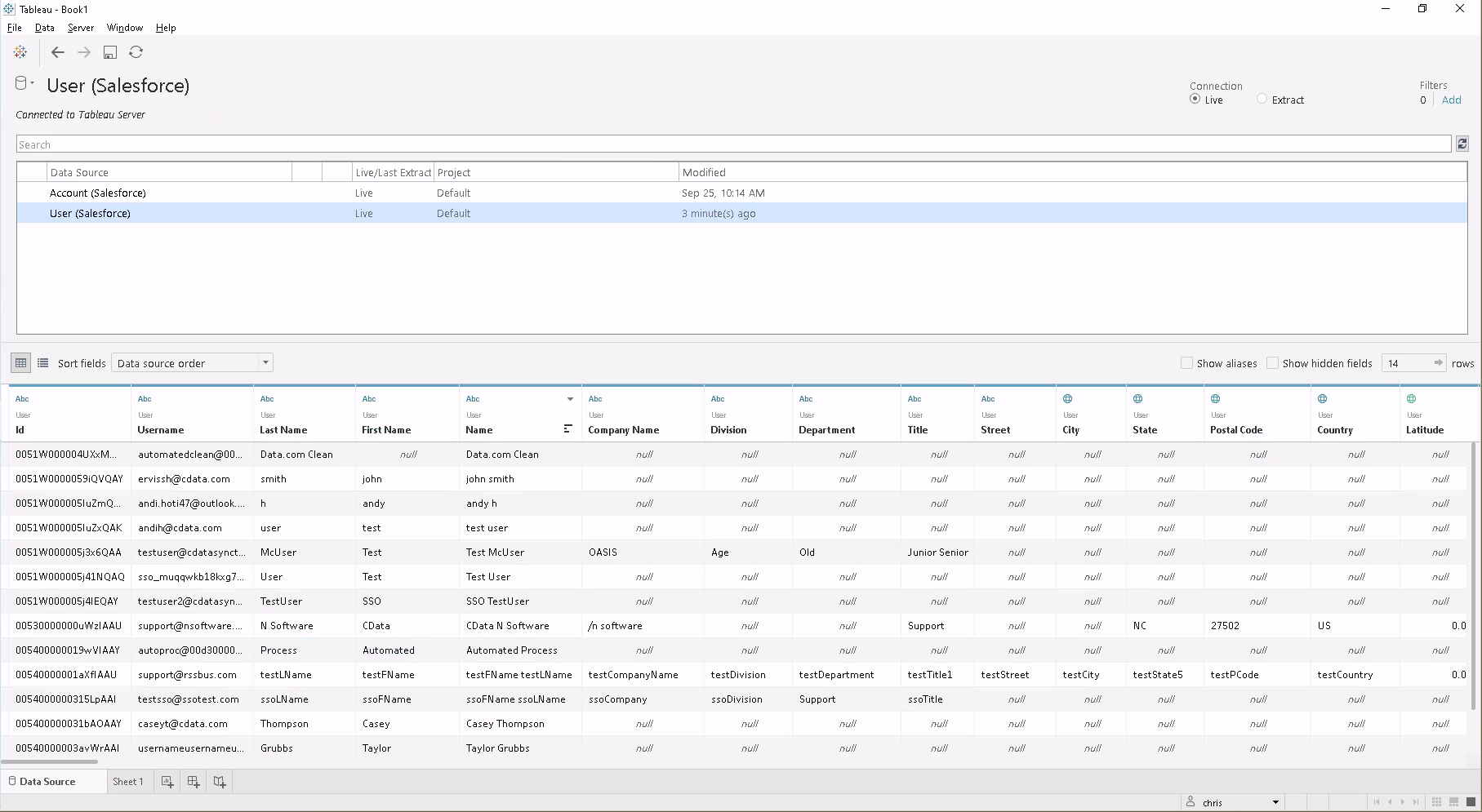
Note that workstation connected to the same server will be able to use the same source in Tableau Desktop, even if the driver isn't installed there. Also, workbooks created directly on Tableau Server (via the web interface) can use this source.
Visualize Zuora Data in Tableau Server
With the Data Source published to Tableau Server, you are ready to visualize Zuora data.
- Login to your Tableau Server instance.
- Connect to the remote source using the Search for Data -> Tableau Server in the Connect sidebar.
![Remote Data Source]()
- Click the published Data Source.
- Click New Workbook.
- In the workbook, Zuora fields are listed as Dimensions and Measures, depending on the data type. The CData JDBC Driver discovers data types automatically, allowing you to leverage the powerful data processing and visualization features of Tableau.
- Drag a field from the Dimensions or Measures area to Rows or Columns. Tableau creates column or row headers.
- Select one of the chart types from the Show Me tab. Tableau displays the chart type that you selected.
![Visualizing live Zuora data in Tableau Server]()
Using the CData JDBC Driver for Zuora with Tableau Server, you can easily create robust visualizations and reports on Zuora data. Download a free, 30-day trial and get started today.






